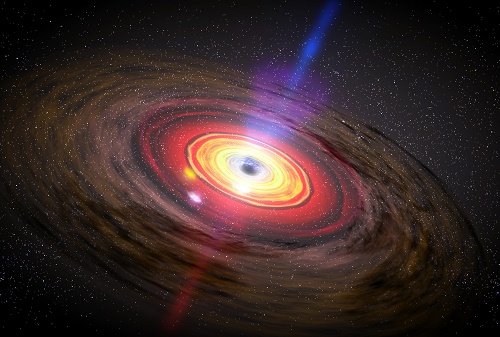Galaxy

A galaxy is a huge mass of stars, gas and dust, all kept together by the force of gravity, and rotating around a central point. In the Universe there are billions of galaxies. A galaxy can comprise between one billion to 100,000 billion stars.
There are galaxies of different forms and sizes. The elliptic galaxy has old stars and is generally large and bright.
Spiral galaxies have long arms spiralling out from a central nucleus. Those arms contain mainly new stars, and are where new stars may begin. Irregular galaxies do not have an exact formation. They are usually small and rich in gas and dust.
Some spiral galaxies are cut through with a straight bar of stars at the centre with spiral arms branching off at the end. These galaxies are called Barred Spirals.
Quasars
All Quasars are millions of light years away from the Earth. A Quasar looks like a star, but it is widely believed that it is actually the nucleus of a galaxy, with a black hole at the centre.

Black Hole
The explosion of a big star can generate a Black Hole i:e a heavenly body in which the force of gravity is so strong that it does not allow anything to escape, not even light. That is why Black Hole cannot be seen, not even with the most powerful telescope.

The milky Way
The Milky Way is our galaxy. It gets it name because in the starry sky, it appears to the naked eye as a milky-white trail. It is a spiral galaxy, with the Sun and other planets in one of it's arms.
All that we see in the sky with the naked eye belongs to our galaxy, with the exception of three patches which, in fact, are other galaxies.

